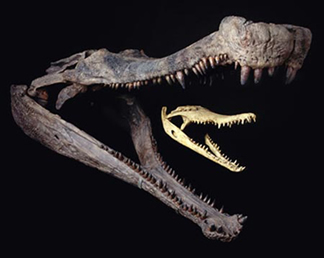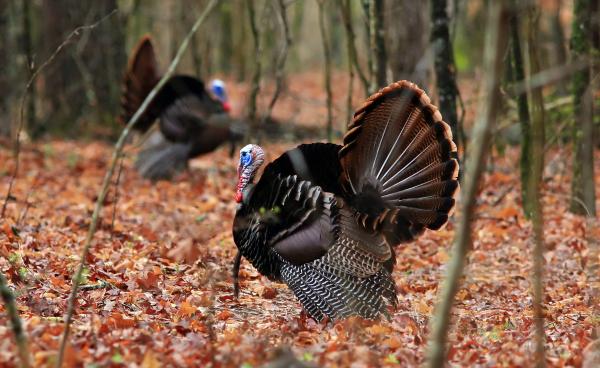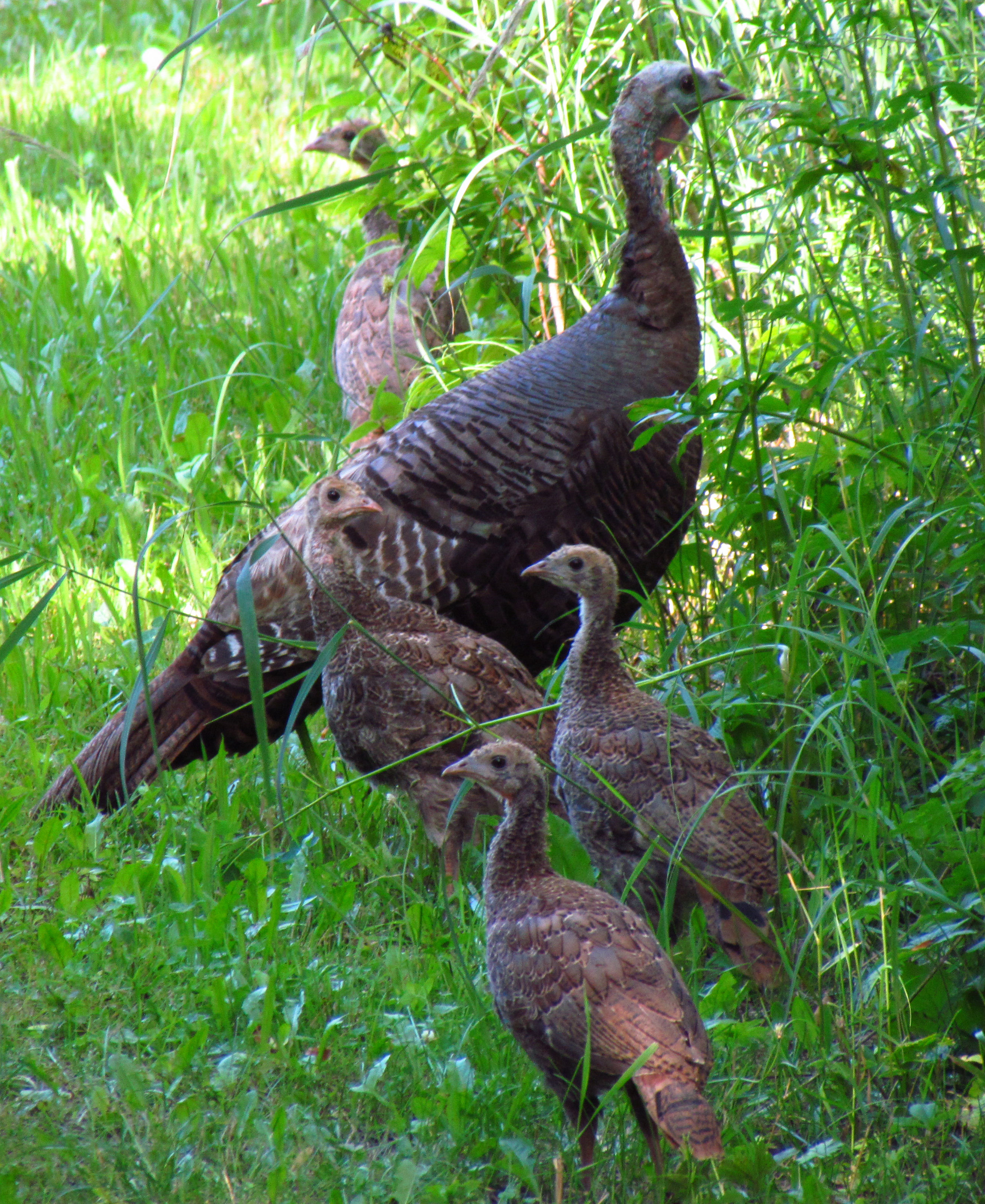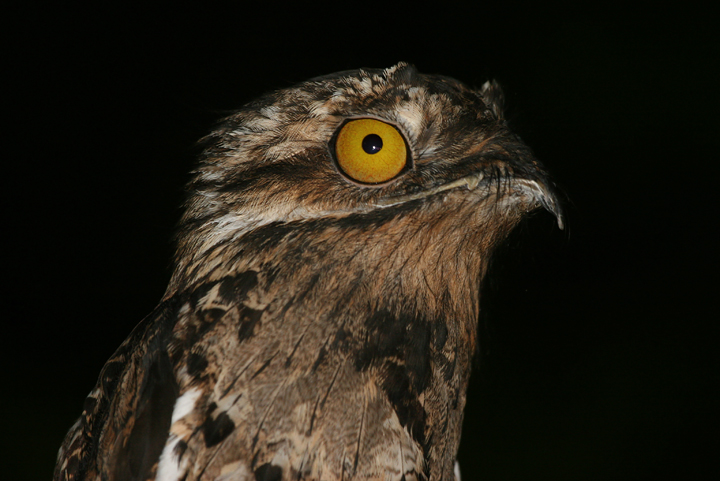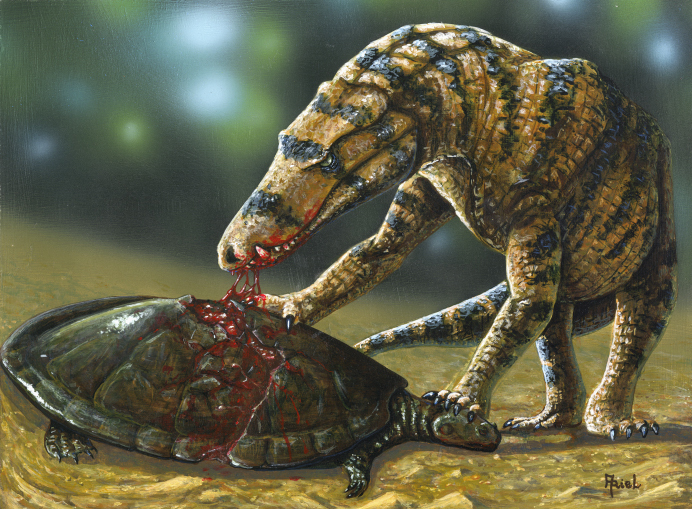Requested by MrGorsh
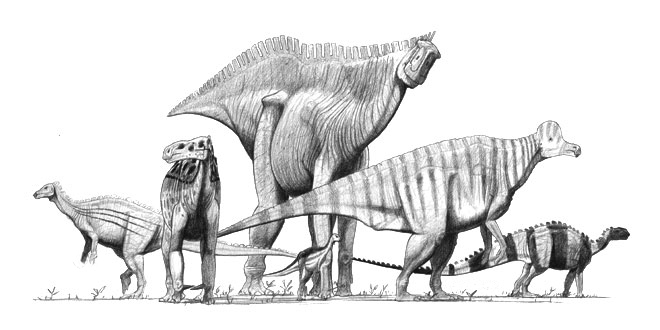 |
| Diversity of the Ornithopods |
Ornithopods were a hugely successful group of herbivorous dinosaurs, ranging from a little larger than a house cat, to 50-foot giants like
Shantungosaurus that rivaled sauropods in size. The key to their success was the ability to process plant matter more efficiently than other dinosaurs. While ankylosaurs and ceratopsians also possessed the ability to chew, it was only in ornithopods that advanced dental batteries and unique jaw joints evolved. This allowed them to dominate an environment filled with tough plants species that were evolving. Many people overlook ornithopods because they tend to seem less interesting than other "sexier" dinosaurs like
T-rex and
Triceratops, but their lifestyles, evolution, and anatomy are just as interesting as those of any other animal group. However, before I start, I will note that ornithopod evolution and classification is an extremely debatable subject, especially since the group was historically a taxonomic wastebasket of bipedal herbivorous dinosaurs. So I'll try my best to explain the many theories surrounding their origins and evolution based on my own sources.
The most primitive ornithopods we know of are commonly called the "hypsilophodontids." Although considered a natural group in the past, many now consider the "hypsolophodontids" an unnatural group, and some genera are actually closer relatives of iguanodonts than other "hypsolophodonts" (this is why I'm putting quotations around their name). The earliest known "hypsolophodontids" appear in the fossil record during the Late Jurassic, like
Othnielosaurus and
Agilisaurus, and survived all the way up till the extinction event 65 million years ago, with species like
Thescelosaurus and
Orodromeus present. They lived on every continent and tended to all have a similar body plan; the majority were small, with short skulls, large eyes, short beaks, long stiff tails, and long legs with proportions evolved for running at high speeds. They likely used this speed to escape from predators, since they were without any other noticeable defense. This makes me think of them as being very skittish animals, ready to use their high speed to run at any sign of danger, like rabbits or deer today.
Some odd members of this group include the Australian polar
Leaellynasaura, which had a tail close to three times it's own body length, and owner of the most vertebrae of any ornithopod outside of hadrosaurs. It's also famous for its apparently large eyes, however, this was based on the discovery of a juvenile skull; adults actually have the same sized eyes as other "hypsolophodontids." Another member I personally find very interesting is the long-snouted
Thescelosaurus, made famous by Willo, a dinosaur that was first thought to have its heart preserved. While this has now been shown to instead be a sand clump, it still has a very strange skeletal anatomy.
Thescelosaurus has a very long, thin snout, very unlike the short snout of other "hypsolophodonts," and leg proportions that would've hindered running speed (a long femur, a short tibia, and a short metatarsus). Nobody quite knows how
Theselosaurus lived, but one theory that I've found interesting in recent months is the idea that it might have lived like modern capybara, spending time in the water for protection (as suggested by its short legs and long skull, both adaptations for aquatic life) and coming out on land at night to feed. This theory hasn't been popularized yet, and many people haven't even heard of it, but I'm open-minded and certainly find it possible after looking through its anatomy.
Numerous discoveries from North America and Australia also suggest that these animals, like rabbits and some species of kangaroos, might have been burrowers, their large, robust shoulders and hands being used to excavate tunnels, and their self-sharpening beaks being used to help carve openings in the dirt. These animals also have a small bone, called the palpebral, over the eyes that would've supported skin that could shade the eyes. A similar bone has been found in modern day birds of prey, who use the bones to help prevent glare when spotting prey. But "hypsolophodontids" were predominantly herbivorous, at most the animals might eat some insects from time to time, but certainly not in need of any predatory "sunglasses." Instead, scientists have suggested that they were used to protect the eyes while digging, by keeping rocks and dirt from damaging the delicate structures. Some hypsolophodonts also have been found with large, bony plates on the ribs. These don't seem to be very good for protection, as they were extremely thin and fragile, not suited for predatory attacks. So far nobody can agree on the function of the plates, but some have suggested that they have something to do with the respiratory system.
Despite these animal's success, they still hadn't evolved the advanced ways of processing food found in later ornithopods, and while their chewing was still better than many ornithischians, it was primitive and needed work. Ornithopod feeding got more advanced with the evolution of iguanodonts, who took the already present chewing of "hypsolophodonts" and added to it. They developed a enlarged premaxila that lacks any teeth and a deep dentary with parallel dorsal and ventral margins. These simple modifications helped with food processing so well, that they quickly started to dominate the local fauna, and evolved into much larger sizes. They seemed to have evolved during the middle of the Jurassic, as suggested by a single femur known by the name
Callovosaurus (this also suggests "hypsolophodonts might have appeared earlier in the fossil record).
Callovosaurus is thought to be a dryosaurid, the most primitive type of iguanodont and looked very similar to "hypsolophodonts" in appearance, with long legs, small heads, and big eyes; in fact, they probably lived very similar to them as well. After them quickly evolved the camptosaurids, which were larger, had more elongated skulls, and were more heavily built than dryosaurids. They were also the first group where a thumb claw is seen present, which in later iguanodonts became enormous (I'll discuss this more further down). From them quickly evolved more advanced members, like
Iguanodon and
Dollodon, which were the most successful animals of their day. Their decendants included advanced members of the hadrosauroids, but we'll get to them later.
Some species of iguandontians, however, seem to be a bit difficult to find a good place to fit onto this tree, most notable is the famous American genus
Tenontosaurus. What used to be thought of as a hypsolophodont, is now thought to be a type of basal iguanodontian in its own group, but where it fits exactly on the tree is still a matter of research.
Tenontosaurus' most noticeable feature is its extremely long, deep tail, which took up 2/3 of its total body length, and a short nasal ridge that could have been used for display. It's also famous for supposedly being attacked by a pack of
Deinonychus, but some recent evidence suggests otherwise. Another very primitive group of iguanodonts are the r
habdodontidae, which were a group of late-surviving iguanodonts that lived in Europe during the late Cretaceous. Scientists always had a hard time trying to pin down the rhabodonts' evolutionary relationships, as they were originally considered ceratopsians, but we seem to have a much better idea about them now. They were also, notably, some of the weirdest of ornithopods, having enormous skulls and teeth compared to their body size, and to this day we still don't know what they used them for.
During the iguanodont's evolution, many groups evolved different ways of living, but what was most noticeable was that many iguanodonts seem to have evolved in similar ways to tyrannosaurs, with some species being extremely robust and others being very gracile in anatomy. These gracile and robust morphs, seemed to have evolved to avoid competition with each other. This is reflected in fossil finds — you will often see robust and gracile iguanodonts living side by side at the same fossil site, but it's rare to see two of the same type. One of the most gracile forms of an iguanodont yet found is the African
Ouranosaurus, which is well known for its elongated vertebrae, and was likely able to run away from potential predators at very high speeds. On the opposite side of the spectrum, one of the most robust of all iguanodonts lived alongside
Ouranosaurus in Africa, known as
Lurdusaurus.
Lurdusaurus was immensely stocky and robust, with an extremely wide hip and stomach, short arms and legs with wide toes, a short, thick tail, and powerful arms; it was the sumo-wrestler of ornithopods. Many scientists have compared it to ankylosaurs in terms of its massively wide hips and robust build, but why get this robust in the first place? Well, many scientists looking over
Lurdusaurus' anatomy have suggested that it was the dinosaur equivalent of a hippo, using its huge girth to keep afloat in water.
Along with being quite possibly the most aquatic herbivorous dinosaur ever found,
Lurdusaurus also has one of the largest hands of any ornithopod, equipped with one of the largest thumb spikes. The thumb spike of iguanodonts has always been thought of as a defensive weapon, and certainly they would use it if their life was at stake. However, gracile morph iguanodonts have tiny thumb spikes, not suited for protection against large predators, and wouldn't their speed be enough anyway? Not just that, but later hadrosaurs completely lost their thumb spikes, and
Lurdusaurus still has one present despite the fact it would've caused stress on its bones if it reared up to use it on land. This has led many scientists to think that the thumb claw instead was used like the spurs on roosters, in territorial battles, and the enormous size of the claw and arm on
Lurdusaurus suggests that these animals dealt serious damage to each other when fighting, bringing to mind, again, the modern hippo. Alternatively, some think it could have been used to break open large seeds, but then again, would you really need a thumb spike a foot long to break open a little seed?
Of course, when you think about ornithopods nowadays, you don't think of lumbering aquatic animals anymore; that's the old view. Many people instead think of the hadrosauroids, the last group of ornithopods to evolve. Hadrosauroids, during their reign, were the largest, most numerous, and most biologically successful group of ornithopods to evolve. In North America alone we have close to 60 species of hadrosauroids present in the fossil record, each with its own characteristic body shape and build. Along with that, they also just happened to have evolved the most successful way of processing food of any dinosaur. They were surely the pinnacle of the ornithichian's success.
The hadrosauroids were able to tweak the iguanodonts' feeding apparatus and make it even more efficent than it was, adding to it an elongated snout to allow a larger number of teeth in the jaws. The snout broadened at the tip, producing the characteristic duck-like shape, and allowing for a larger amount of food to be taken in. The jaw also started forming complex dental batteries so that when one tooth fell out, another immediately took its place. These newly evolved jaws were what made the hadrosaurs able to out-compete their more primitive iguanodontian ancestors, thus the majority of iguanodonts went extinct.
Hadrosauroids are separated into two groups, the hadrosaurinae (also known as saurolophinae) and the lambeosaurinae (however, there are members that seem more primitive than either group). The hadrosaurinae are characterized by their low, elongated skulls with large nasal openings and wide beaks for taking in large quantities of vegetation. Some of these dinosaurs include
Edmontosaurus, who at the moment is one of the best known fossil hadrosaurs and lived alongside T-rex,
Maiasaura, who is the first dinosaur in the western hemisphere for which we found eggs and could attribute a nest,
Tethyshadros, a island-living hadrosaur that has some of the strangest anatomy I've seen on a dinosaur (I get headaches just thinking about this guy), and
Shantungosaurus, the largest hadrosaur, largest ornithischian, and largest dinosaur outside of the sauropods. The other group, the lambeosaurinae, are characterized by shorter, taller skulls, with small nasal openings and less wide beaks for more selective feeding. They are also well known for their large nasal crests that extend high above the top of the head. Some of these species include
Parasaurolophus, a rare dinosaur that lived throughout a number of localities in North America,
Corythosaurus, which is one of the best known lambeosaurs,
Tsintaosaurus, which is also known as the "Unicorn" dinosaur for its straight tubular crest, and finally, the recently discovered giant known as
Magnapaulia, quite possibly the largest lambeosaur ever.
These animals make up the majority of the dinosaur fauna during the late Cretaceous, and have been found on every continent with the exception of Africa and Australia (although the former is probably due to lack of good sampling sites), but they were at their most diverse in North America, and for quite a while we didn't really know why. However, a study that came out a few months ago put forth a possible explanation. At the same time that we are seeing this boom in hadrosaur diversity, the Rocky Mountains were rising, and the giant inland sea that was present at the time cut the continent in half. This caused many hadrosaurs, ceratopsians, and tyrannosaurs to be isolated within valleys between mountain chains and the ocean, and would cause isolation within a population and accelerate the process of evolution, causing many different animal forms to appear, but would likely have low populations. We've connected the dots even more and found that, when the inland sea started to recede, and the Rockies started to decrease in size with more erosion, dinosaurs weren't isolated anymore. This caused the diversity of ornithopods to decrease, and instead you would have large populations of a few dinosaur types. Who knew hadrosaurs could tell us so much?
Based on the evidence of bone beds, trackways, and communal nesting sites we've uncovered, it has been interpreted that Hadrosaurs were very social animals. While some species, like
Parasaurolophus, were very rare among their local fauna and probably lived in very small herds, some bone beds have been found to contain thousands of individuals, likely representing herds moving across the landscape. This means that these dinosaurs likely needed ways to communicate, and they evolved the ability to communicate advanced messages throughout their nasal cavities. Lambeosaurs evolved a series of long, looping canals throughout the crests on their head, which produced a loud, trumpet-like sound when air was forced through it. Not just that, but since not just every species, but every individual has a slightly different shape to their crest, individuals could recognize each other through their calls. Hadrosaurs, however, didn't have large cranial crest to help communicate, yet we know they lived in herds. So what some scientists think they did was use their large nasal openings to communicate by inflating and deflating skin around them, causing a honking noise similar to geese.
Hadrosaurs also are notable for being very good parents, as shown by their complex social lives, and the discovery of fossil nests that were organized in a similar way to birds. The nests themselves are actually very similar to modern day megapode birds, which are a type of bird from southeast Asia and Australia, and evidence suggests that the nests were used year after year. The nests are also perfectly spaced, exactly one hadrosaur body-length apart. The nests themselves were bowl-shaped and filled with vegetation to help incubate the eggs. Baby hadrosaurs and fossil embryos have been discovered and show that the limb bones were poorly developed, suggesting the young were nest-bound and that parents probably brought food back to the nest to feed them. Growth rates from hadrosaurs show that they reached close to 3 meters in just a year or two of growth, one of the fastest levels of growth seen in the animal kingdom.
While many of these discoveries have been made in North America, as I stated above, they were not limited to that area. Both the largest and most primitive members are actually from Asia, and it is likely that that is where they originated. Dwarf hadrosaurs are also known to be found in Europe, which was once a scattering of small islands at the time. Other fossil hadrosaurs and complete nests have been found in South America, and we've even found them as far south as Antarctica. All these fossil finds clearly show that these animals weren't just tyrannosaur chow, but they were brilliantly evolved creatures ready to do what they needed to do to survive. Too bad their reign was cut short by extinction, I would've loved to have seen them in their glory.
_____________________________________________________________________________
So there you have it. I hope that I answered your questions,
MrGorsh. If there is still anything you might be wondering please feel free to leave a comment below, and for everyone else I hope you find this topic as interesting as I do.
For my next post I really don't know what I want to write about since I have so many ideas. Maybe something either about other Mesozoic animals, or perhaps something from more recent times? If you give me some feedback, I'll make sure to address topics you want to know more about. Until then, stay sharp!


